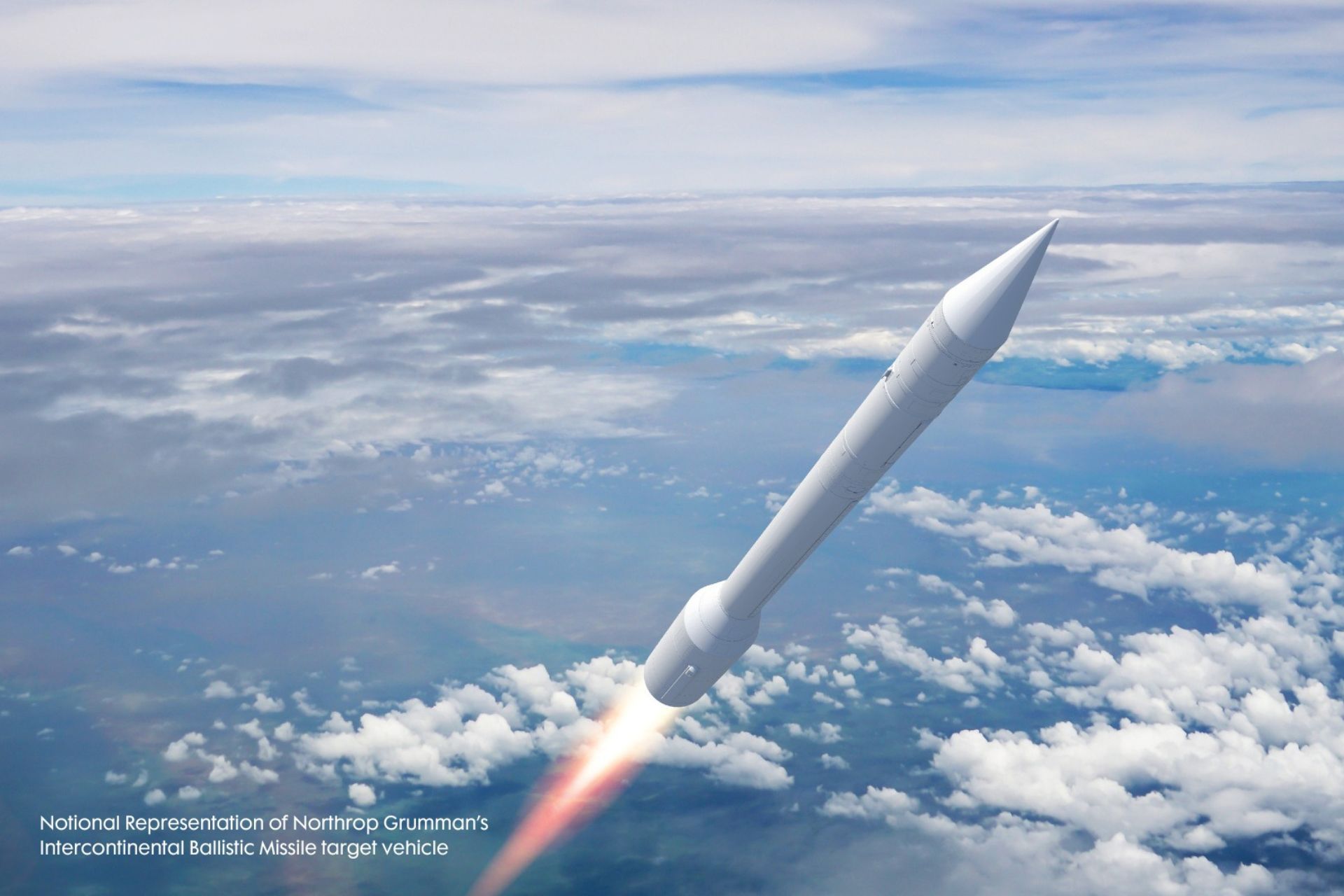Breaking News
Northrop Grumman Enhances ICBM Target Vehicle for Extended Range and Capability.
Northrop Grumman Corporation is undertaking a redesign of the Intercontinental Ballistic Missile (ICBM) target vehicle for the Missile Defense Agency (MDA). This effort involves replacing the target’s original Trident C4 first-stage solid rocket motor with a Peacekeeper SR119 motor to extend the vehicle’s range, lift capability, and payload capacity, which are essential for simulating long-range ballistic missile threats during missile defense testing.
Follow Army Recognition on Google News at this link

The ICBM target vehicle, which recently passed its critical design review, is scheduled for its first flight in late 2025 (Picture source: Northrop Grumman)
The redesign, driven by a combination of new and proven technologies, includes minimal modifications to the retired SR119 motor, enabling it to serve as the first stage in the updated target vehicle. The motor's ability to meet mission performance requirements was validated through a successful static fire test conducted in 2022. Additionally, Northrop Grumman, in collaboration with the MDA and the US Air Force Rocket Systems Launch Program, conducted initial integration pathfinding operations in June 2024. These tests confirmed the motor’s suitability for this new application, marking a crucial step in the vehicle’s development.
A notable innovation in this project is Northrop Grumman’s use of virtual and augmented reality technologies to animate and fully validate the integration and stacking operations of the redesigned target vehicle. This approach, applied for the first time in the company’s target programs, allows for thorough testing of new procedures in a low-risk environment. The virtual simulation of pathfinding operations further mitigates risks, enhances end-to-end test capabilities, and optimizes processes to deliver this critical capability with agility.
The ICBM target vehicle, which recently passed its critical design review, is scheduled for its first flight in late 2025. The vehicle will be equipped with advanced front-end components to simulate sophisticated long-range ballistic missile threats. These simulations are vital for testing the effectiveness of the United States' missile defense systems, including the Ground-based Midcourse Defense System and the Aegis Ballistic Missile Defense System.
Northrop Grumman’s director of targets, Robin Heard, emphasized the importance of balancing affordability with innovation. The company’s approach combines high-performing, government-owned surplus motors with sophisticated front-end technologies to create effective solutions that meet customer needs. Over the past 13 years, Northrop Grumman, as the prime contractor for ICBM target vehicles and intermediate-range ballistic missiles, has delivered 25 such vehicles and supported 10 successful launches since 2011.
The redesigned ICBM target vehicle program is Northrop Grumman’s first to leverage virtual and augmented reality to fully animate the vehicle’s factory integration and field operations, known as "pathfinding." This process provides a lower-risk environment to thoroughly vet new integration, stacking, and testing operations on inert hardware. The virtual simulation of the vehicle's pathfinding operations further reduces risks, enhances the end-to-end testing capability, and optimizes processes to deliver critical capability with agility.
Northrop Grumman is a leading provider of threat-representative target vehicles used in the testing and validation of the nation’s missile defense systems. With an advanced portfolio of avionics components and adaptable kits, the company repurposes retired motors to quickly configure adversary threats specified by customers, thereby reducing costs.


























